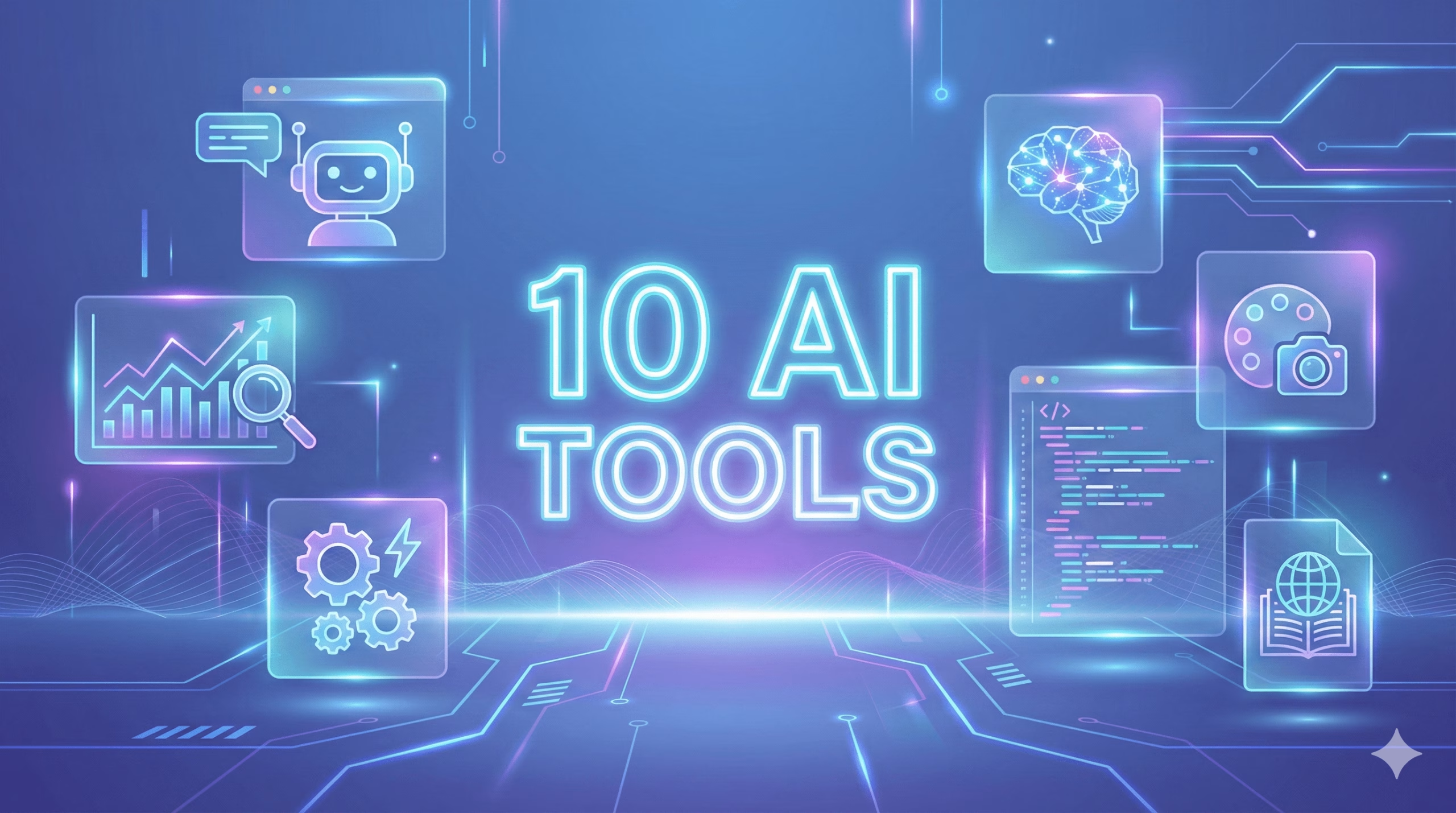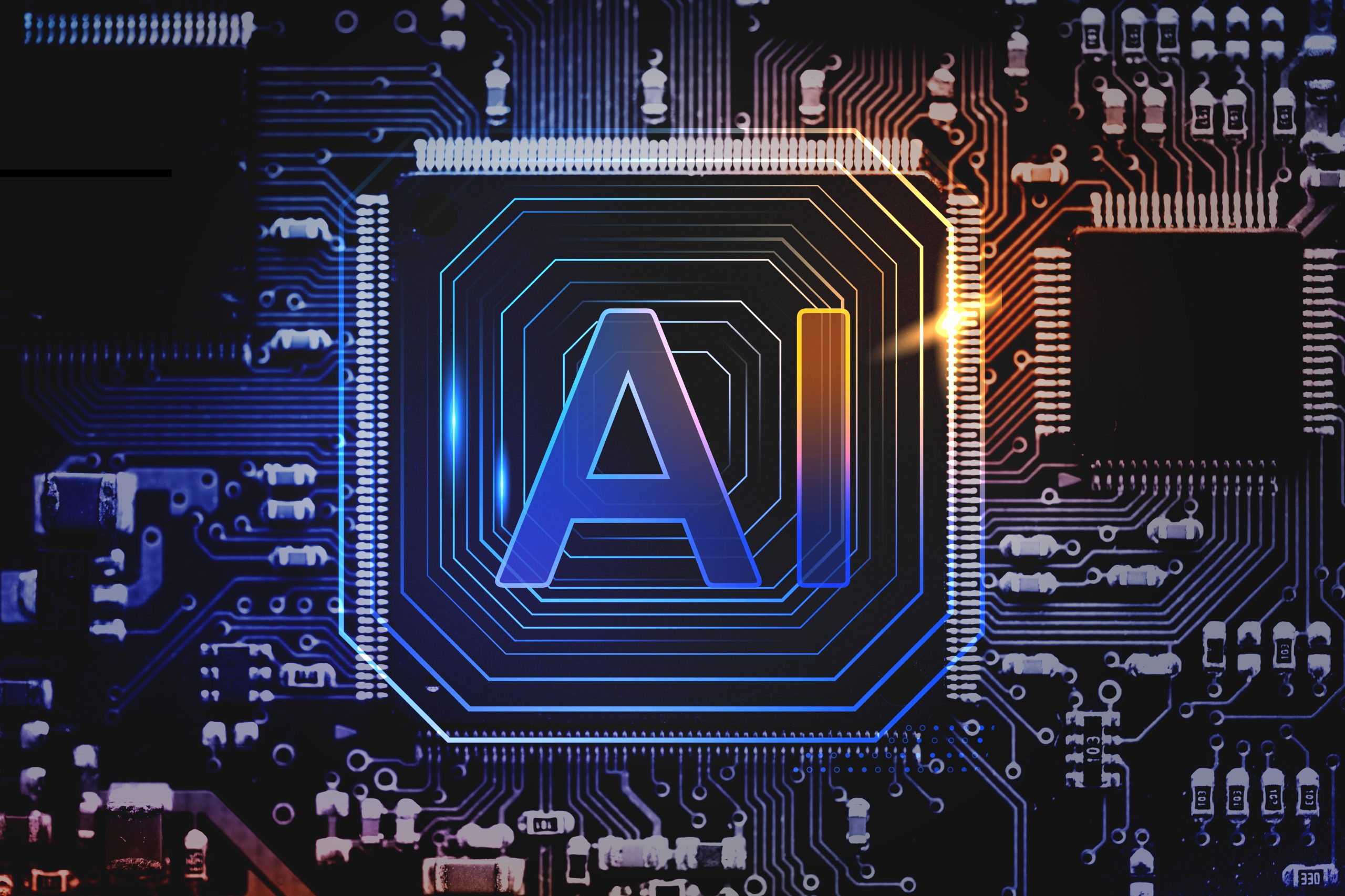10 AI Tools That Are Changing How We Work in 2025

Artificial intelligence isn’t just a buzzword anymore. It’s become the quiet workhorse behind millions of daily tasks. From writing emails to analyzing data, AI tools have slipped into our routines so seamlessly that we barely notice them. Today we discussed about 10 AI Tools that are changing how we work in 2025.
Some promise the world and deliver mediocrity. Others genuinely transform how you work, think, and create. After testing dozens of platforms and watching how teams actually use them, I’ve narrowed down the ten that truly matter.
This isn’t about hype. It’s about tools that solve real problems for real people.
Why AI Tools Matter More Than Ever
The workplace has shifted dramatically. Remote teams span continents. Deadlines compress into hours instead of days. The volume of information we process has exploded beyond human capacity.
AI tools bridge that gap. They handle repetitive tasks so you can focus on strategy. They spot patterns in data that would take weeks to find manually. They even help you communicate more clearly when your brain feels like mush at 4 PM.
But the best AI tools do something more important. They amplify human creativity rather than replace it. They’re collaborators, not replacements.
Let’s explore the ten that are leading this revolution.
1. ChatGPT: The Conversational Powerhouse
OpenAI’s ChatGPT became a household name for good reason. This conversational AI assists with everything from brainstorming to debugging code.
What makes it special? The natural language understanding feels remarkably human. You can ask follow-up questions. It remembers context from earlier in your conversation. It admits when it doesn’t know something instead of making things up.
Real-world use case: Marketing teams use ChatGPT to generate first drafts of blog posts. Developers ask it to explain complex code. Students use it as a study partner that never gets tired of explaining concepts.
The paid version offers faster response times and access during peak hours. For heavy users, it’s worth every penny.
2. Midjourney: Visual Imagination Unleashed
Creating visual content used to require expensive software and years of training. Midjourney changed that overnight.
This AI image generator transforms text descriptions into stunning artwork. Type “a cozy coffee shop on Mars with steampunk architecture” and watch it materialize in seconds.
What sets it apart: The artistic quality rivals professional designers. Each generation offers multiple variations. You can refine images through simple text commands.
Small businesses use Midjourney for social media graphics. Authors create book covers. Marketers generate unique visuals without stock photo fatigue.
The learning curve exists but flattens quickly. Within an hour, most people create images they’re proud to share.
3. Notion AI: Your Thinking Partner
Notion already revolutionized how teams organize information. Adding AI capabilities made it exponentially more powerful.
Notion AI lives inside your workspace. It summarizes long documents. It generates action items from meeting notes. It even helps you write better by suggesting improvements to your drafts.
The magic moment: When you realize you can ask Notion AI to extract key points from a 50-page report.
Teams working across multiple time zones find this especially valuable. Information stays organized and accessible without drowning in endless Slack messages.
4. Grammarly: Beyond Spell Check
Everyone knows Grammarly fixes typos. But the AI-powered version does so much more.
It analyzes tone. It suggests clarity improvements. It catches inconsistencies in style. It even helps you adjust writing for different audiences.
Why professionals love it: The real-time suggestions appear as you type. It’s like having an editor hovering over your shoulder, minus the judgment.
The business version offers brand voice consistency. Companies ensure every team member communicates in a unified style.
For anyone who writes professionally, Grammarly has become as essential as the keyboard itself.
5. Jasper: Content Creation at Scale
Content marketing demands volume. Jasper helps teams produce it without sacrificing quality.
This AI writing assistant specializes in marketing copy. Blog posts, social media captions, email campaigns, product descriptions—Jasper handles them all.
What makes it different: Templates optimized for specific use cases. A blog post template structures content differently than a Facebook ad. Jasper understands these nuances.
Marketing agencies report 5x faster content production. The AI generates first drafts. Human editors add personality and verify accuracy.
Some worry AI writing lacks authenticity. The solution? Use Jasper for structure and speed. Add your unique voice during editing.
6. Synthesia: Video Without Cameras
Video content dominates social media. But creating it traditionally requires cameras, lighting, editing skills, and time.
Synthesia generates videos from text. Choose an AI avatar, type your script, and watch it come alive. The avatar speaks in dozens of languages with natural gestures.
Perfect for: Training videos, product demonstrations, multilingual content. Companies create localized videos for global markets without hiring translators or flying crews internationally.
The technology still has that slight “uncanny valley” feel. But it improves constantly. For certain use cases—especially internal training—it’s already indistinguishable from traditional video.
7. Zapier with AI: Automation Intelligence
Zapier connected apps before AI existed. Now it uses machine learning to make those connections smarter.
The platform automates workflows between thousands of applications. When a form submission arrives, Zapier can add it to your CRM, send a Slack notification, and create a calendar reminder.
The AI advantage: Smart suggestions for automation workflows. The system learns from millions of existing automations. It recommends connections you might not have considered.
Small business owners save 10-15 hours weekly through intelligent automation. Tasks that required constant attention now happen invisibly in the background.
8. Copy.ai: Marketing Messages That Connect
Writing compelling marketing copy is an art. Copy.ai brings AI assistance to that creative process.
The platform generates headlines, taglines, product descriptions, and ad copy. Input some basic information about your product. Get dozens of variations optimized for conversion.
Where it shines: Social media content. The AI understands platform-specific best practices. Instagram captions differ from LinkedIn posts. Copy.ai adjusts accordingly.
Startups with limited marketing budgets use Copy.ai to compete with larger competitors. Professional-quality copy becomes accessible regardless of team size.
9. Otter.ai: Meetings Without Note-Taking
How much meeting time gets wasted on note-taking? Otter.ai eliminates that entirely.
This AI transcription service records meetings and generates searchable transcripts. It identifies different speakers. It even creates summaries with action items highlighted.
Game-changer for: Remote teams, journalists, students, anyone in endless video calls. Review a one-hour meeting in five minutes by scanning the transcript.
The mobile app records in-person conversations too. Interviews, lectures, brainstorming sessions—all transcribed accurately and instantly searchable.
10. Runway ML: AI Video Editing Revolution
Video editing traditionally required specialized skills. Runway ML democratizes the process through AI-powered tools.
Remove backgrounds from video clips. Generate slow-motion effects. Even create video from text descriptions. The interface feels intuitive rather than overwhelming.
Content creators rejoice: What used to require Adobe After Effects training now happens through simple commands. Green screen effects without a green screen. Object removal that would take hours in traditional software.
The technology keeps evolving. Recent updates added features that professional studios charge thousands for.
Choosing the Right AI Tools for Your Needs
Ten tools might seem overwhelming. You don’t need all of them. Start by identifying your biggest time drain.
Spend hours writing? Try ChatGPT or Jasper. Drowning in meeting notes? Otter.ai transforms that pain point. Need visual content but lack design skills? Midjourney or Synthesia might be your answer.
The best approach combines multiple tools. Zapier connects them. Notion organizes everything. Grammarly polishes your writing across platforms.
Cost considerations: Many offer free tiers. Test before committing. Most AI tools provide more value than their monthly cost within the first week.
The Future of AI Tools
These ten represent today’s landscape. Tomorrow brings more innovation.
AI tools will become more specialized. Expect industry-specific solutions for healthcare, legal work, education, and creative fields. The general-purpose tools we use today will evolve into precision instruments.
Integration will deepen. Tools will talk to each other seamlessly. Your AI assistant will understand your preferences across platforms. The experience will feel less like using separate tools and more like one intelligent system.
What doesn’t change: The need for human judgment. AI tools are powerful assistants. They’re not replacement for critical thinking, creativity, or emotional intelligence.
Common Concerns About AI Tools
Let’s address the elephant in the room. Many worry AI will eliminate jobs. History suggests otherwise.
New tools create new opportunities. Someone needs to train AI models. Someone interprets results. Someone combines AI capabilities in novel ways.
The jobs that disappear involve repetitive tasks better suited to automation. New roles emerge requiring creativity, strategy, and human connection.
Privacy matters: Choose tools with clear data policies. Understand how they use your information. Most reputable AI platforms prioritize user privacy and offer enterprise solutions with enhanced security.
Getting Started Today
Pick one tool from this list. Not three, not five. Just one.
Spend a week integrating it into your workflow. Learn its quirks. Discover what it does well and where it falls short. Only then add another tool.
The goal isn’t collecting AI tools like Pokemon cards. It’s solving specific problems efficiently.
Start small. Build gradually. Let results guide your expansion.
The Bottom Line
AI tools have moved past novelty into necessity. They’re not perfect. They require human oversight. But they’ve fundamentally changed what’s possible for individuals and small teams.
These ten tools represent the current leaders. They’ve proven their value across industries and use cases. They continue improving as AI technology advances.
The question isn’t whether to adopt AI tools. It’s which ones solve your specific challenges. Start exploring. Your productivity transformation awaits.
What’s your experience with these tools? Which one changed your workflow most dramatically? The conversation continues as AI capabilities expand and new solutions emerge.
The future of work isn’t human versus AI. It’s humans empowered by AI, accomplishing what neither could achieve alone.
Read More:
iPhone 17: Latest Specs & Features Unveiled
WhatsApp Status Ads Promoted Channels: Complete Guide to Maximize Your Business Reach in 2025







